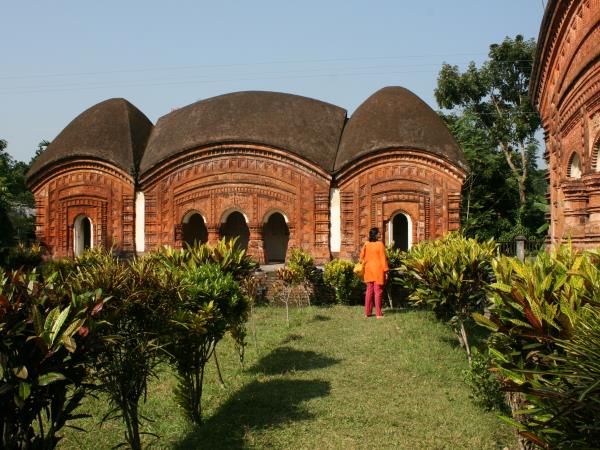JOURNEY BY TRAIN WITH FUI OF JOY
The Railway Journey
The Railway Journey: The Industrialization of Time and Space in the Nineteenth Century
Preface to the 2014 Edition World Machines: The Steam Engine, the Railway, and the Computer
Preface to the 2014 Edition World Machines: The Steam Engine, the Railway, and the Computer
1 The Mechanization of Motive Power
1 The Mechanization of Motive Power (pp. 1-15)
In the economic life of the pre-industrial era, wood was the prime material, universally used in construction and as combustible matter. The shipbuilding industry of the European maritime powers, the iron works and the machines built in the manufacturing and early industrial period were all based on the use of wood. Werner Sombart, the economic historian, regarded the exhaustion of this resource (i.e., the deforestation of Western Europe in the eighteenth century) as an essential factor, or perhaps eventhemain incentive for the development of industrial capitalism. In the pre-industrial era, ‘wood affected all areas of cultural existence, being...
2 The Machine Ensemble
2 The Machine Ensemble (pp. 16-32)
Like any other means of transportation, the railroad provided a medium for moving things from one place to another. Yet the precise way in which it accomplished this distinguished it from the other means of transportation.
Transportation on roads and canals, as developed in eighteenth-century England by private enterprise, made both a technical and an economic distinction between therouteand themeans. The capital investment companies that provided canals and turnpikes to be used upon payment of tolls did nothing further: they had nothing to do with the vehicles that were used on their routes. Anyone using one of...
3 Railroad Space and Railroad Time
3 Railroad Space and Railroad Time (pp. 33-44)
‘Annihilation of space and time’ was the early-nineteenth-century characterization of the effect of railroad travel. The concept was based on the speed that the new means of transport was able to achieve. A given spatial distance, traditionally covered in a fixed amount of travel time, could suddenly be dealt with in a fraction of that time; to put it another way, the same amount of time permitted one to cover the old spatial distance many times over. In terms of transport economics, this meant a shrinking of space: ‘Distances practically diminish in the exact ratio of the speed of...
Excursus: The Space of Glass Architecture
Excursus: The Space of Glass Architecture (pp. 45-51)
The railroad reorganized space. In architecture, a similar reorganization occurred with the introduction of glass and steel as new building materials. The railroad machine ensemble multiplied speed and capacity of traffic; steel and glass multiplied the capacity of roofed structures. Both the railroad and the glass buildings were direct expressions of the multiplied productivity brought about by the industrial revolution. The railroad brought new quantities of goods into circulation; the edifices of glass architecture — railroad stations, market halls, exhibition palaces, arcades — served as places of transit and storage. The spatial capacity of glass architecture stands in a similar relation to...
4 Panoramic Travel
4 Panoramic Travel (pp. 52-69)
In Goethe’s journal on his trip to Switzerland in 1797, there is the following entry:
Left Frankfurt shortly after 7:00 A.M. On the Sachsenhausen mountain, many well-kept vineyards; foggy, cloudy, pleasant weather. The highway pavement has been improved with limestone. Woods in back of the watch-tower. A man climbing up the great tall beech trees with a rope and iron cleats on his shoes. What a village! A deadfall by the road, from the hills by Langen.Sprendlingen. Basalt in the pavement and on the highway up to Langen; the surface must break very often on this plateau, as near...
5 The Compartment
5 The Compartment (pp. 70-88)
To adherents of progressive thought in the first half of the nineteenth century, the railroad appeared as the technical guarantor of democracy, harmony between nations, peace and progress. According to them, the railroad brought people together both spatially and socially. This current of European thought found its most emphatic expression in the followers of Saint-Simon: the intellectual generation that appeared on the French political and economic stage around 1825, the year Saint-Simon died, projected all the egalitarian hopes left unfulfilled by Revolution and Empire onto industry and its spectacular spearhead, the railroad: to them it was the material force that...
6 The American Railroad
6 The American Railroad (pp. 89-112)
The history of the railroad in the United States differs from its history in Europe in that the American railroad was not the industrial successor to a fully-fledged pre-industrial transportation system: in America, the railroad served to open up, for the first time, vast regions of previously unsettled wilderness. ‘With the construction of railroads, American culturebeganwhat European culture completed with them’, says Max Maria von Weber; ‘beforethe humble footpath, before the cattle road, the railroad stretched itself through the wild savannah and primeval forest. InEurope, the railroad systemfacilitatestraffic; in America, it creates it.’¹ (Italics...
7 The Pathology of the Railroad Journey
7 The Pathology of the Railroad Journey (pp. 113-123)
Until the end of the 1850s, medical science exhibited only sporadic interest in the effects that rail travel had on the health of passengers and railway personnel.¹ The first systematic study appeared in 1857: it was E. A. Duchesne’sDes chemins de fer et leur influence sur la santé des mécaniciens et des chauffeurs (On the railroads and their influence on the health of the engineers and the firemen)an industrial-medical survey of the type introduced by Gaskell in England in the 1830s to study the health of factory workers. The engine-drivers and firemen, whose health Duchesne discussed were seen...
Excursus: Industrial Fatigue
Excursus: Industrial Fatigue (pp. 124-128)
According to the 1862Lancetpamphlet, the state of fatigue that apparently overwhelmed travelers after train journeys of some duration was due to the mechanical shocks they experienced. These ‘rapid, short vibrations and oscillations’ did not affect only the human body but equally the materials of the machine transporting it; not only the travelers suffered from fatigue, the materials did, too.
In the mid-nineteenth century the concept of fatigue acquired this additional connotation, the technical one. It was first documented in a lecture given in 1854 to the London Institution of Civil Engineers; the lecture, entitled ‘On the Fatigue and...
8 The Accident
8 The Accident (pp. 129-133)
Let us glance at Thomas Creevy’s description of a train journey in 1829: ‘It is really flying, and it is impossible to divest yourself of the notion of instant death to all upon the least accident happening’.¹
Early perception of the railroad was characterized by a curious ambivalence. The journey was felt to be uncannily smooth, easy, secure, like flying. ‘When I closed my eyes this sensation of flying was quite delightful, and strange beyond description; yet strange as it was, I had a perfect sense of security, and not the slightest fear’, related Fanny Kemble, the famous London actress,...
9 Railroad Accident, ‘Railway Spine’ and Traumatic Neurosis
9 Railroad Accident, ‘Railway Spine’ and Traumatic Neurosis (pp. 134-149)
The destructive force of the railroad disasters manifested itself not only in the physical demolition of the technological machinery and the passengers: it had other effects as well. In many accident victims who had suffered no injuries, or only minor ones, symptoms of psychic and physical deterioration appeared after some time and these frequently resulted in total disability or, in some cases, death. The medical profession found it difficult to diagnose these symptoms, which became an important subject of medical and legal controversy after the railroad companies had become legally liable for their passengers’ safety and health. (In England this...
Excursus: The History of Shock
Excursus: The History of Shock (pp. 150-158)
That Freud in his later years developed his concept of shock and his theory of the stimulus-shield on the basis of the mass phenomenon of shell shock during the First World War, would seem a direct continuation of the history of shock, as such, which is, in large measure, part of military history.
According to theOxford English Dictionary, the word ‘shock’ has carried since the seventeenth century the connotations of ‘blow’, ‘strike’, ‘concussion’, in a material-physical as well as a borrowed psychological sense. The original meaning, first noted in the sixteenth century, was a military one. ‘First adapted as...
10 Stimulus Shield: or, the Industrialized Consciousness
10 Stimulus Shield: or, the Industrialized Consciousness (pp. 159-170)
It is now easy to perceive why the originally military and military-medical concept of shock experienced a revival in the nineteenth century in the context of the railroad and its accidents. The railroad related to the coach and horses as the modern mass army relates to the medieval army of knights (and as manufacture and industry do to craftsmanship). In the railroad journey, the traditional experience of time and space was demolished the way the individual experience of battle of the Middle Ages is abolished in the modern army (and the individual craft activity is abolished in manufacturing and industrial...
11 The Railroad Station: Entrance to the City
11 The Railroad Station: Entrance to the City (pp. 171-177)
In the pre-industrial era, overland traffic was confined to the space of the landscape through which it proceeded, and this remained the case even at its destination, the city. The stagecoach related to the city in exactly the same way that it related to the open country. The stagecoach depot was located in the center of the city, usually adjacent to an inn that was named after it (Zur Post, The Coach and Horses), and thus was practically indistinguishable from the surrounding buildings in architectural terms. The stagecoach was completely integrated into urban life.
The railroad, however, terminated that intimate...
12 Tracks in the City
12 Tracks in the City (pp. 178-187)
The transformation of the still largely medieval aspect of the European city in the nineteenth century; the explosion of its spatial enclosures; its horizontal expansion of urban space, with the creation of specialized districts (residential, business, and industrial; bourgeois and proletarian, etc.) — all were results of the industrial revolution in general, and of the railroad’s transportation revolution in particular. Where this development was not caused directly by the railroad, the latter nevertheless functioned as an accelerating factor for existing tendencies. Kellett, who has researched the railways’ influence on urban development in nineteenth-century England, gives a summary that is fundamentally applicable...
13 Circulation
13 Circulation (pp. 188-197)
While Haussmann transformed the old Paris into a new city of flowing traffic, a similar change was taking place in the realm of retail business. In 1852 Aristide Boucicaut opened the first Parisian department store, the Bon Marché. The simultaneity was not coincidental: the department store, as a new form of retail merchandising, was predicated on a well-developed intra-urban traffic system. ‘It only became possible to exploit such large retail outlets after the development of the omnibuses during the following decades and the appearance of the first horse-powered tramways in the period between 1850 and 1860.’¹ As Haussmann’s traffic arteries...








































